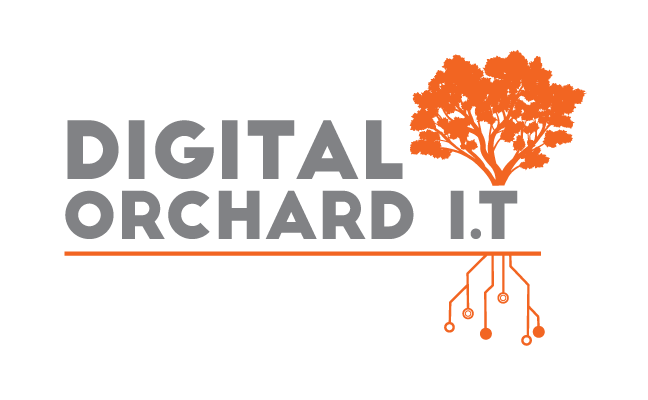
Why an IT upgrade is the secret to better cyber security and happier staff
If you’ve ever found yourself staring at your computer screen in frustration, with the feeling of
impending doom as the system crashes, you’re not alone. The reality is we all feel frustrated with our IT at times. When we’re trying to meet a deadline, but we’re plagued with constant errors and waiting endless minutes for a file to open, our motivation vanishes just as quickly as our productivity.
But could slow IT systems be inflicting something far more severe than minor irritation and
productivity loss? Could this outdated, slow technology be putting your business at risk from
possible cyber-attacks?
If you’re responsible for network security, the last thing you want are outdated systems and
disengaged staff not paying attention to potential threats – but can that be avoided? Yes – by
reviewing and upgrading ineffective, out of date IT systems.
Why would I want to upgrade my IT systems?
The older an IT system gets, the higher the need for specialist attention and work to keep it at
maximum health.
Technology is improving at such a speed that older hardware and software can quickly fall behind. Whilst it’s not as dramatic as it used to be – when things would just stop working – there are very real underlying risks of running an old setup.
What is the business impact of not upgrading?
We know investing in new technology can be expensive. The cost of replacing hardware or software is often the number one reason why many business owners put off making IT changes. And then there’s the perceived loss of productivity whilst you’re in flux between old and new equipment - or the lost time during new system training.
But failing to update technology can be costly for your business, far beyond productivity issues or expenditure.
When a system is down or a member of staff can’t access a piece of software, it’s easy for everyone to see the impact. But clinging to old technologies can cause lots of other behind the scenes issues you might be unaware of.
Here’s a few examples of the impact outdated IT systems can have on your business:
- Frustration and stress – we’ve touched on this already but battling with daily IT problems really does put a strain on your people. You might find some are very vocal about the problem, whilst others quietly attempt to deal with it. Either way, not being able to do your job well causes worry over deadlines, inefficiency, and letting down the team. Not great for team morale or mental wellbeing.
- Business risk – successful businesses and top performing teams rely on solid processes, but when IT systems stop working it can force employees to take short cuts or find workarounds. Not following procedures has a knock-on effect of human error, mistakes, compliance issues, and ultimately costly emergency fixes or increased operational costs.
- Customer perception – we could just as easily label this one as impeded business growth. Put simply if your competitors are taking advantage of the latest technology, the newest SaaS platforms and the most innovative software – whilst you’re trying to work around old IT systems – you risk being overtaken by more agile competitors who are ready to respond to new opportunities.
Then there’s customer perception, a notable factor in how successful a company really is.
For real business growth you’ll need slick systems, a responsive website, and things like real-time support. If you can’t respond to customers, process orders, or have polished account management because of slow or outdated systems, it’s likely you’ll find yourself with dissatisfied customers.
Can your current systems put you at the forefront of innovation? - Hiring - an unexpected casualty of old IT systems is often recruitment or staff retention.
With modern workers now expecting flexible working options that allow them to work,
communicate and collaborate from anywhere, you’ll need the latest technology and
software to attract – and keep – your best people.
These days workers have little patience for technology that doesn’t keep up, gets in the
away of a project, or hinders their productivity.
The benefits for cyber security
This could’ve been on the list above, but we think cyber security deserves is so important it merits its own section.
The greatest risk of an outdated operating system are data breaches; cyber criminals will use it to try and steal or lock your data (and hold it ransom). It’s easier for them to find security vulnerabilities in older software, especially if it’s no longer being actively supported by the original manufacturer.
Cybercrime is big business. Just look at the WannaCry attack on the NHS in May 2017. A recent
investigation showed that at least 6,900 appointments – including some operations – were cancelled when many NHS Trusts’ computers were locked by hackers. Some of those computers were running Windows XP, an old operating system that’s no longer supported. Others were running Windows 7, but they weren’t up to date.
It only takes a single vulnerability to let a hacker in. With cybercrime now the biggest threat to UK businesses, you can’t afford to stick your head in the sand about the age of your operating system.
4 other signs you need an IT upgrade
Aside from cyber security, there’s other tell-tale signs that your IT systems need to be upgraded. You
can learn more about them in our guide to upgrading your technology, but to get you started these
are the most common problems we’ve come across in businesses:
1. You can’t do system updates
Having an always-on connection to the internet has changed how operating systems are updated. You used to get a small number of large updates every year. Now updates happen all the time – almost weekly. The pace of change means that operating systems can quickly go out of date. The older the operating system, the greater the risk it will just fall over and can’t be fixed.
2. Your system is buggy
A buggy system is never going to get better on its own, and in the meantime causes all of sorts of headaches for irritable and frustrated employees. Systems needs to be brought up to date, cleaned, and have preventative attention on a constant basis - before small problems become bigger issues.
3. It won’t run the latest applications
Nothing ages an IT setup more than its inability to handle the latest applications. Cloud-based
applications are normally fine as they run in your browser (so long as your operating -system can handle the latest browsers). But if you want to run apps on your computer itself - especially specialist software – they might struggle without the latest technology to back them up.
4. You’re running out of memory
A lack of sufficient memory is one of the most common causes of slow computers, which struggle to do all the jobs we demand of them. There’s nothing more frustrating than sitting, waiting, watching a computer slowly finish a task and if a member of your staff loses just 10 minutes a day to a slow computer, that can add up to a staggering 40 hours of lost time over a year.
Making an IT upgrade work for you
Now that we’ve talked about upgrading your IT systems and some of the benefits, how can you find out if your systems are performing their absolute best?
Download our upgrading your IT guide for more information and an achievable starting place. You might find after reading it that you’re happy with your current set up for security and productivity. But if we’ve given you food for thought and you have doubts about the condition of your IT systems, then the easiest way to start might be to outsource the project to a trusted team of IT support experts.
IT support when you need it most
IT is a critical and strategic part of any modern organisation and it pays to hand it over to someone who can take care of everything properly. When it comes to upgrades, software updates and cyber security, you don’t want to guess the best option or take unnecessary risks. Even if you have an IT helpdesk, outsourcing strategic parts of you IT support gives you peace of mind that your setup gets the attention it deserves, as well as providing a cost-effective solution that adds real value to your business.
At Digital Orchard IT, we have your best business interests at heart, and access to a team of
seasoned professionals who understand which tools and services your business needs to thrive.
If you’d like to have an informal chat about your current IT set-up, get in touch.

